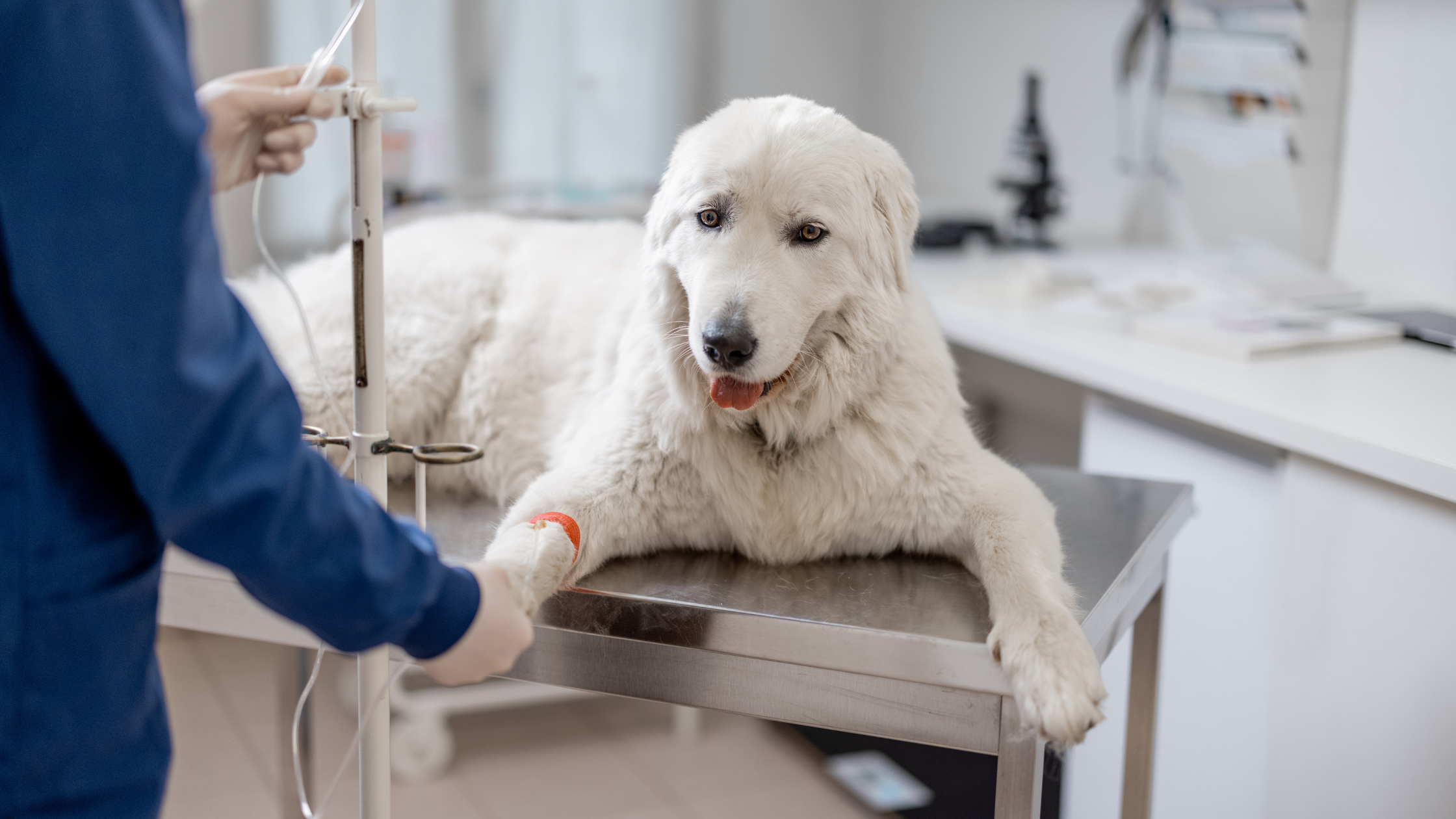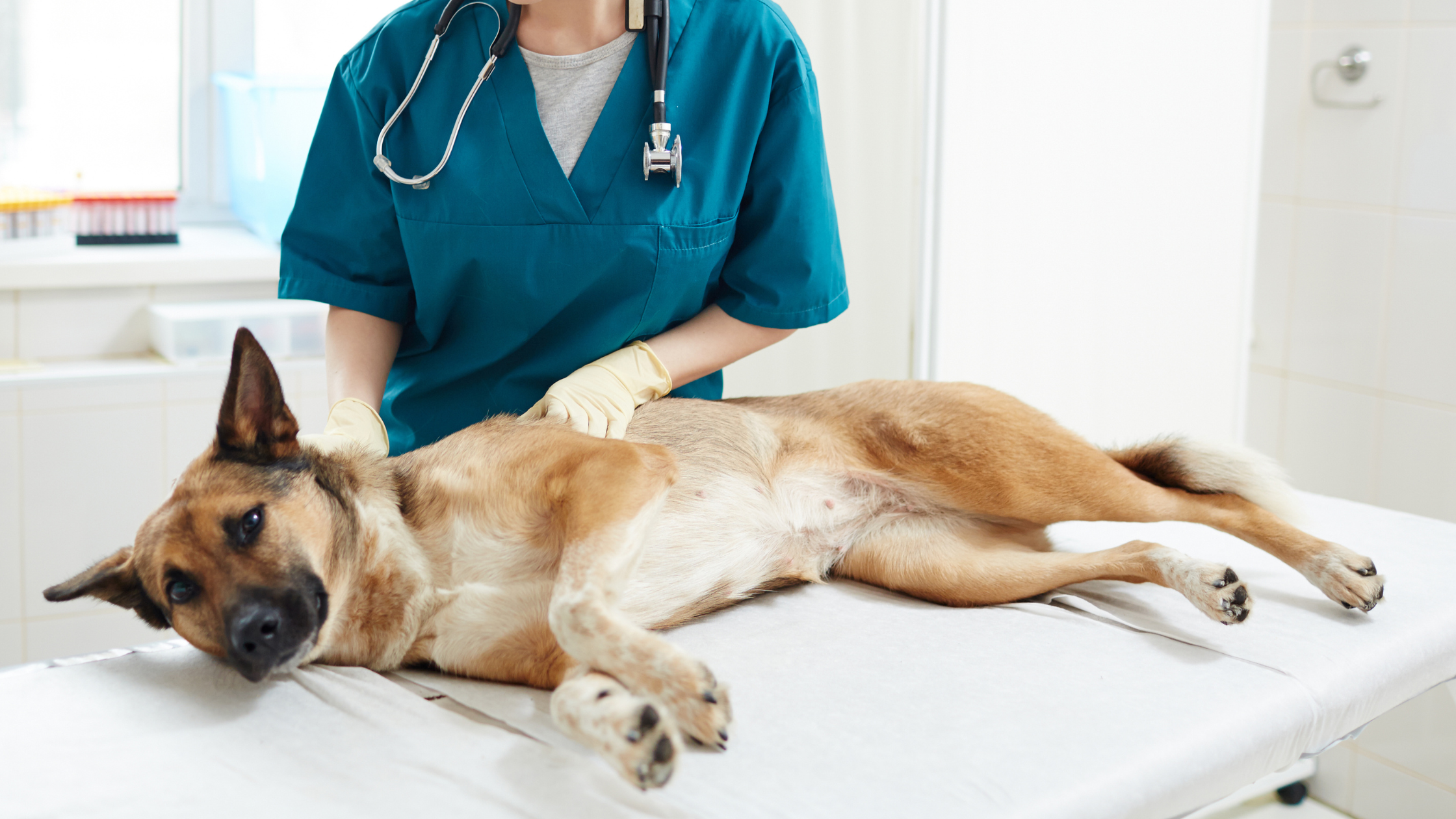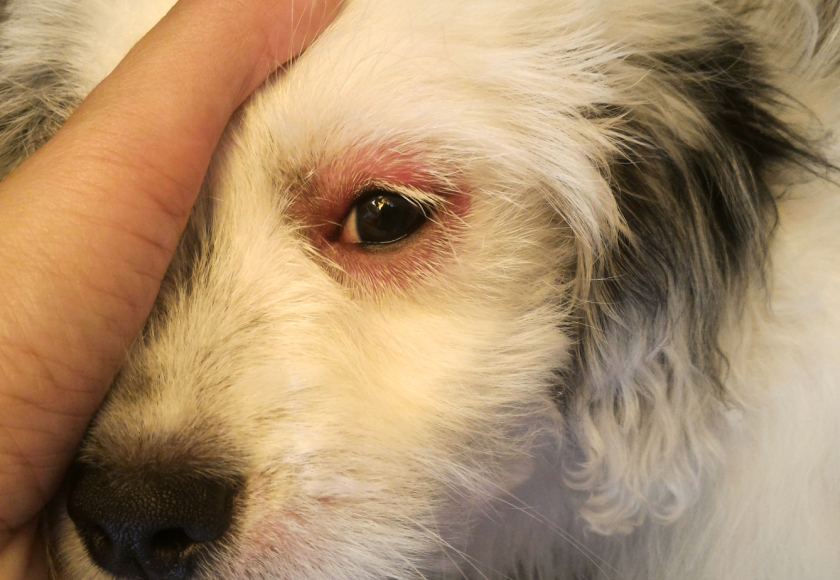Canine epilepsy is one of the most common nervous system disorders, affecting approximately 3–5% of all dogs. It is a chronic condition in which a dog experiences recurrent seizures (convulsions). Although epilepsy in dogs may seem frightening, with proper diagnosis and treatment, your pet can live a full and happy life.
The most important things are knowledge, proper assistance during a seizure, and close cooperation with your veterinarian.
Table of contents
What is epilepsy in dogs?
Epilepsy in dogs is a brain disorder characterized by recurrent seizures. They occur when the balance between excitatory and inhibitory nerve impulses is disturbed. Brain neurons become overly active, causing a “storm” of electrical impulses that manifests as convulsions.
A seizure is not a random occurrence – if a dog has repeated convulsions, it is considered to have epilepsy.
Types and causes of epilepsy in dogs
Epilepsy in dogs can manifest itself in several forms, depending on the causes that trigger it:
- Primary (idiopathic) epilepsy in dogs is most often associated with genetics and occurs in young dogs (1–3 years old). This form is more common in Beagles, Belgian Shepherds, Retrievers, Poodles, Border Collies, etc. Dogs diagnosed with this disease should not be bred.
- Secondary (symptomatic) epilepsy in dogs – caused by brain damage (tumors, trauma, stroke, hydrocephalus (also known as water on the brain).
- Reactive epilepsy in dogs – caused by external/environmental factors: poisoning, complications of canine diabetes, liver or kidney disease, infections (e.g., canine distemper) or tick-borne diseases (e.g., babesiosis or anaplasmosis).

How to recognize the symptoms of epilepsy in dogs?
The symptoms of epilepsy in dogs can vary from barely noticeable behavioral changes to severe seizures. It is important for owners to notice the early signs in time.
The most common early signs of epilepsy in dogs
Usually, the first signs appear before the seizure. Here are some of the most common symptoms:
- Restlessness, anxiety attacks.
- Sudden changes in behavior (hiding, seeking attention).
- Increased salivation.
- Unusual gaze.
What does a dog’s epileptic seizure look like? Stages and symptoms
A dog’s epileptic seizure usually occurs in several stages, which are easy to recognize:
- Pre-epileptic phase – the dog becomes restless, seeks attention or hides, often noticeable several hours before the seizure.
- Epilepsy aura – begins a few seconds or minutes before the convulsions; noticeable changes in behavior.
- Seizure phase – the dog may fall on its side, jerk its legs, drool profusely, lose consciousness, and sometimes urinate.
- Post-epileptic phase – the dog is exhausted, disoriented, sometimes aggressive or very hungry.
When does a seizure become dangerous?
Status epilepticus is an extremely dangerous condition in which a seizure lasts longer than 2 minutes or convulsions recur without interruption. In such cases, it is necessary to contact a veterinarian immediately.
The Begemotas Veterinary Clinic accepts such patients without an appointment. In case of emergency, please contact us.

Generalized and focal seizures
It is also important to know that not all dogs with epilepsy experience severe convulsions affecting the whole body. Seizures are classified as:
- Generalized seizures, which affect both sides of the brain, often accompanied by loss of consciousness (fainting)
- Focal seizures, which occur only in a specific part of the brain, may manifest as twitching of the muzzle muscles, blinking, or repeated episodes of strange behavior. Sometimes focal seizures progress to generalized seizures.
The importance of the host’s observations
It is very important for the owner to record the course of the seizures. If possible, film the dog during a seizure. This provides the veterinarian with accurate information and helps to select the appropriate treatment.
What to do if your dog starts having seizures?
Seizures in dogs can be frightening, but the most important thing is to remain calm and respond appropriately. There are several clear steps you can take to protect your dog from injury.
First aid during a seizure
These actions can help reduce the risk and alleviate the condition during an attack:
- Move any nearby objects so that the dog does not injure itself.
- Place a soft cloth under its head.
- Ensure that the dog can breathe freely.
- Keep track of the time — this is important information for the veterinarian.
If the seizure lasts longer than 2 minutes or recurs several times in a row, contact your veterinarian immediately.
What to avoid during a seizure?
It is very important to know not only what to do, but also what mistakes to avoid. The following actions should not be taken:
- Do not put your hands in the dog’s mouth – it may bite you accidentally.
- Do not try to stop the convulsions by force.
- Do not restrain or shake the dog.
Treatment options for epilepsy in dogs and veterinary assistance
Epilepsy in dogs is a chronic disease, so treatment is focused not on a complete cure, but on controlling seizures and ensuring the dog’s quality of life.
Medications and long-term care
Antiepileptic drugs (phenobarbital, potassium bromide, diazepam) are medications for epilepsy in dogs that help reduce the frequency and intensity of seizures. Medication can only be prescribed by a licensed veterinarian.
- Treatment is long-term, for life. Usually, treatment is given throughout the dog’s life, and medication doses may be adjusted according to the animal’s response and age.
- It is important to check your dog’s health regularly and adjust medication doses.
Veterinarians recommend keeping a seizure diary, noting the date, duration, and symptoms. This often helps to identify the type of seizures and environmental triggers that may cause convulsions.
The most important thing is not to stop giving medication on your own, not to be afraid to ask your veterinarian questions, and to constantly monitor your pet’s condition.

Lifestyle changes for dogs with epilepsy
In addition to medication, proper daily care is also important. It can help reduce the risk of seizures:
- Eat regularly and go for walks.
- Avoid stress, fatigue, and overheating.
- Don’t forget about preventive health checkups.
Situations when it is necessary to urgently contact a veterinary clinic due to a dog’s epilepsy
It is necessary to visit a veterinary clinic immediately if:
- The seizure lasts longer than 2 minutes;
- Seizures recur on the same day;
- The dog does not regain alertness after the seizure and remains apathetic;
- New symptoms appear (e.g., paralysis, vomiting, severe weakness).

Living with canine epilepsy
Dog epilepsy is not a life sentence – it is a challenge that can be managed. A close bond between owner and pet, patience, and medical care allow you to enjoy the good days, even if there are occasional “bad days.”
At Begemotas Veterinary Clinic, experienced veterinarians diagnose, treat, and help dogs with epilepsy live a full life. Make an appointment at our clinic, and together we will find the best solution for your pet.





